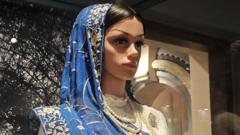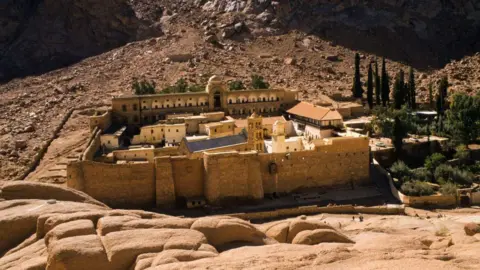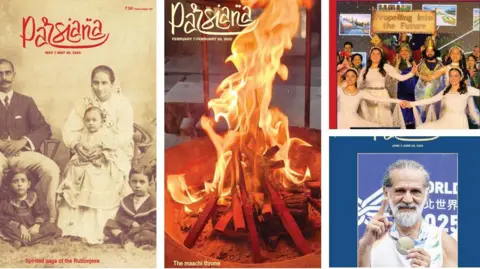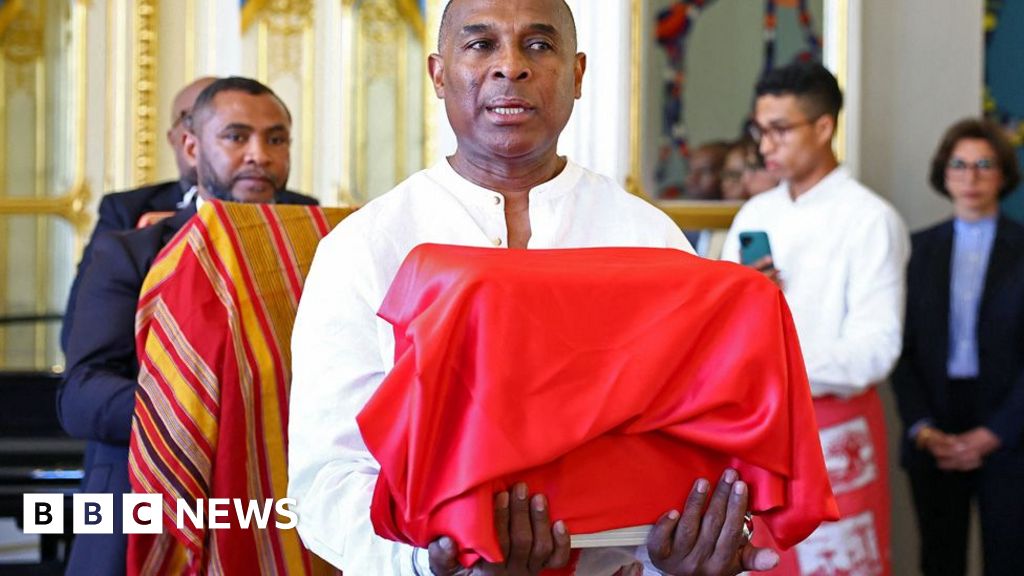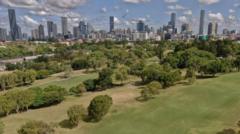In the bustling lanes of Mumbai lies a treasure trove of cultural history dedicated to the dwindling Parsi community: the Framji Dadabhoy Alpaiwalla Museum. Nestled in the heart of India’s financial capital, this museum serves as a tribute to the followers of Zoroastrianism - one of the oldest religions in the world. With an estimated population of just 50,000 to 60,000 in India, the Parsi community is a group originally descended from Persian refugees who fled religious persecution centuries ago.
Curator Kerman Fatakia emphasizes the importance of this recently renovated museum in shedding light on the community's rich heritage: “The newly-renovated museum hopes to shake off some of this obscurity by inviting people to explore the history, culture and traditions of the Parsi community through the rare historical artifacts on display.”
Among the captivating exhibits are objects that date back to ancient civilizations, such as cuneiform bricks and terracotta pots sourced from historical regions like Babylon and Mesopotamia, illustrating the depth of Parsi ancestry. A striking highlight includes a replica of the famed Cyrus Cylinder, considered one of the first declarations of human rights. This replica, inscribed in cuneiform, outlines the rights granted by Cyrus the Great to his subjects in Babylon and is a centerpiece in the museum's narrative on Parsi contributions to civic ideals.
The museum also chronologically portrays the migration of Zoroastrians to India from the 8th to the 19th centuries, showcasing an array of artifacts, furniture, paintings, and textiles, including Parsi sarees influenced by international designs. The collection honors prominent figures such as Jamsetji Tata, the founding force behind the Tata Group, reinforcing the community’s stature in Indian history.
Enhancing the journey through time, the museum features life-size replicas of a Tower of Silence and a fire temple, sacred spaces fundamental to Parsi rituals. The Tower of Silence, where the deceased are placed to return to nature, is exclusively accessible to community members, but the replica offers a glimpse into this unique practice.
The Alpaiwala Museum, founded in 1952, has been revitalized to present its rich collection with clarity and modern presentation. According to Fatakia: “It's a small museum, but it's packed with history. And it's a great place for not just the residents of Mumbai or India to learn more about the Parsi community but for people from all over the world.”
With its diverse and ancient artifacts, the Framji Dadabhoy Alpaiwalla Museum is more than just a collection of items; it is a narrative of resilience and cultural richness waiting to be explored by all who wish to understand the significance of the Parsi community in India’s mosaic of cultures.
Curator Kerman Fatakia emphasizes the importance of this recently renovated museum in shedding light on the community's rich heritage: “The newly-renovated museum hopes to shake off some of this obscurity by inviting people to explore the history, culture and traditions of the Parsi community through the rare historical artifacts on display.”
Among the captivating exhibits are objects that date back to ancient civilizations, such as cuneiform bricks and terracotta pots sourced from historical regions like Babylon and Mesopotamia, illustrating the depth of Parsi ancestry. A striking highlight includes a replica of the famed Cyrus Cylinder, considered one of the first declarations of human rights. This replica, inscribed in cuneiform, outlines the rights granted by Cyrus the Great to his subjects in Babylon and is a centerpiece in the museum's narrative on Parsi contributions to civic ideals.
The museum also chronologically portrays the migration of Zoroastrians to India from the 8th to the 19th centuries, showcasing an array of artifacts, furniture, paintings, and textiles, including Parsi sarees influenced by international designs. The collection honors prominent figures such as Jamsetji Tata, the founding force behind the Tata Group, reinforcing the community’s stature in Indian history.
Enhancing the journey through time, the museum features life-size replicas of a Tower of Silence and a fire temple, sacred spaces fundamental to Parsi rituals. The Tower of Silence, where the deceased are placed to return to nature, is exclusively accessible to community members, but the replica offers a glimpse into this unique practice.
The Alpaiwala Museum, founded in 1952, has been revitalized to present its rich collection with clarity and modern presentation. According to Fatakia: “It's a small museum, but it's packed with history. And it's a great place for not just the residents of Mumbai or India to learn more about the Parsi community but for people from all over the world.”
With its diverse and ancient artifacts, the Framji Dadabhoy Alpaiwalla Museum is more than just a collection of items; it is a narrative of resilience and cultural richness waiting to be explored by all who wish to understand the significance of the Parsi community in India’s mosaic of cultures.

